We tell how to disguise the bottom of the font and establish protection against splashes.
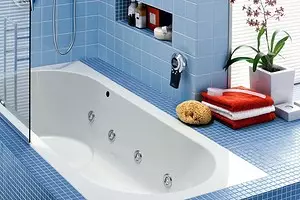
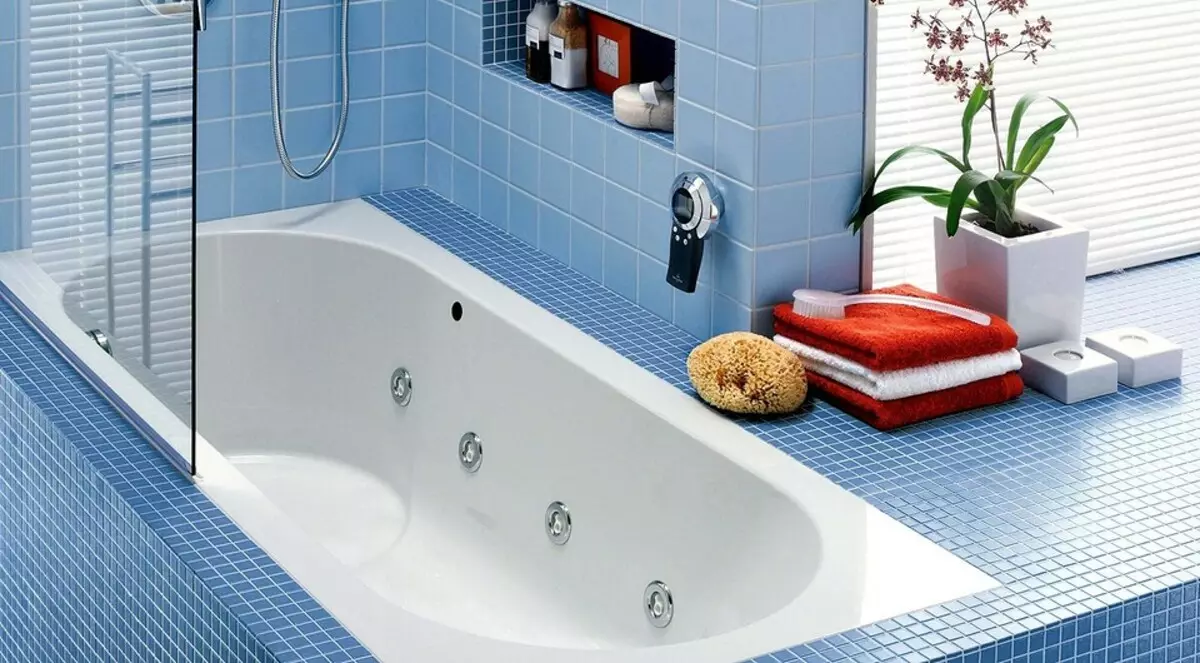
When installing some foxes (for example, vintage cast-iron), legs and bottom are left open. However, much more often the side surfaces of the bath cover the screen, which can be one-sided facade (if the bath is installed on the wall to the wall), with end parts or radius.
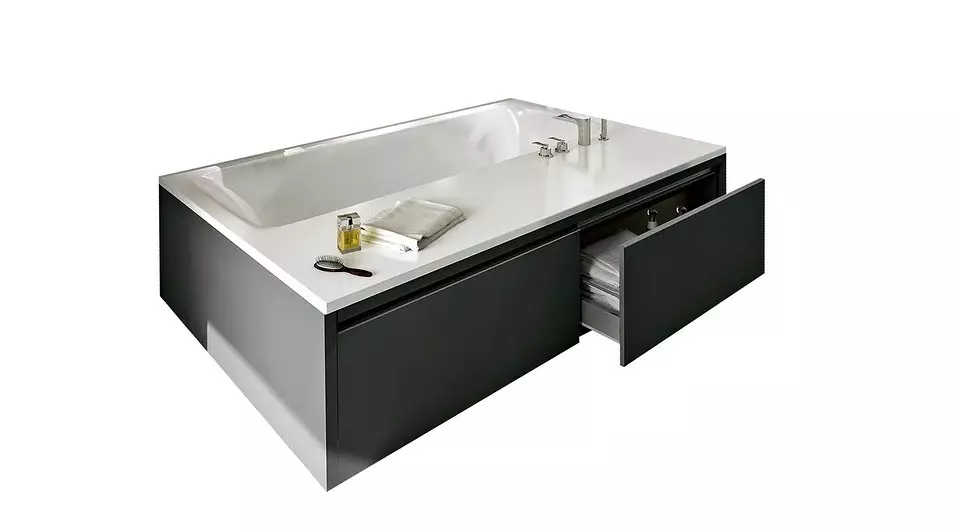
The font in a box with folding doors that require no more than 40 cm for opening, appropriate in the bathroom of ordinary dimensions, and the design with furniture drawers is suitable only for a spacious non-standard layout bathroom
Types of bath screens
The screen can be purchased ready or build. In any case, the design is mounted or erected after laying outdoor tiles and font installation.
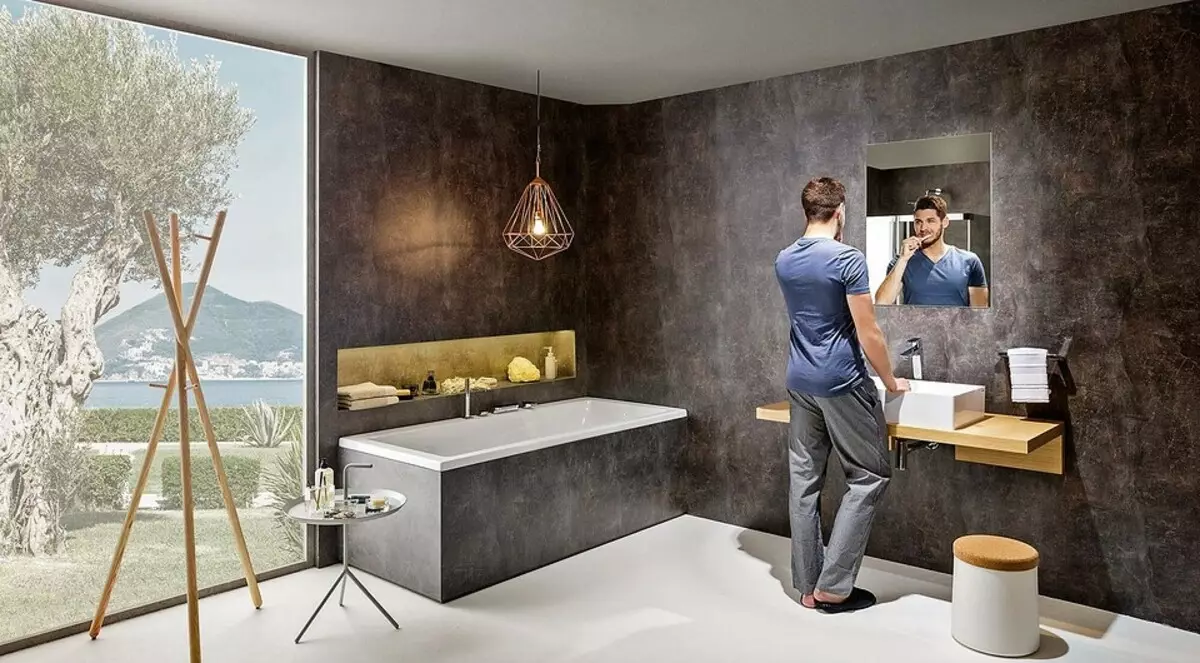
So that the screen can be painted or separated by decorative plaster, its surface must be perfectly smooth
Finished panel
The simplest screen version is a removable laminated MDF or PVC panel, which is attached to the legs of the bath or floor and walls. But such products are short-lived and unlikely to decorate the interior. In addition, they interfere with the use of space under the bathroom for storing household accessories, make it difficult to revise the siphon and pipes.
Much more comfortable, PVC screens with sliding plastic doors in an aluminum frame, which is easy to fix with the help of spacer screws between the floor and the side of the bathtone. They are relatively inexpensive (3-5 thousand rubles), but only two-three-dimensional are available (for example, 150/170 × 50 cm) and three-five colors; Another minus - dust and dirt accumulate in the lower guide.
The best from the point of view of design and functionality the screens are made of Cersanit, Laufen, Ravak, et al., And often the screen is intended for a particular bath model. Products are equipped with swing, folding and sliding doors with reliable opening mechanisms; At the same time, swing and folding flaps sometimes equip the shelves system, holders and hooks, allowing the whole arsenal of household chemicals and tools for cleaning. The only drawback of such screens is a rather high price (from 10 thousand rubles).
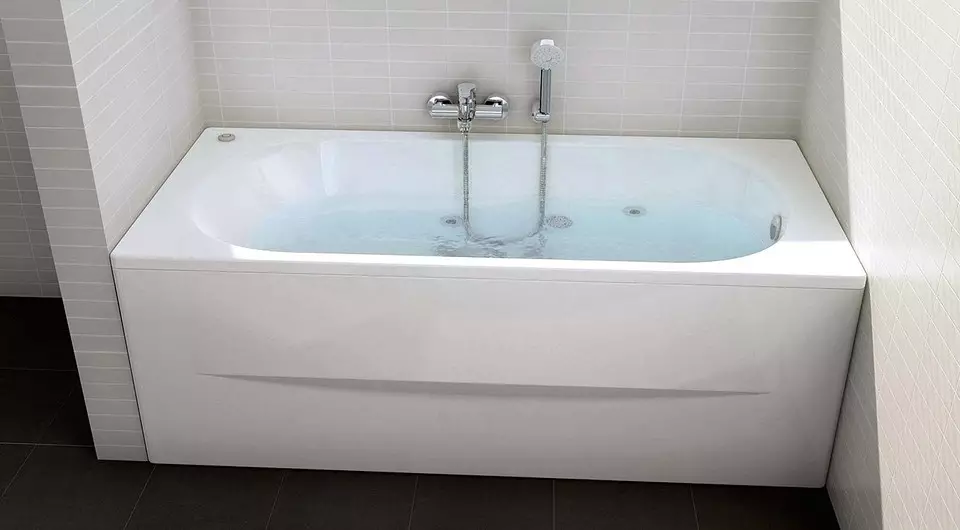
Acrylic screens on the snaps are easily removed, easy to care and stands for loads. Many bath models are equipped with such panels.
30 mm thick panels and more allowed to mount a frameless way (although the frame design is reliable). After preparing the details of the desired size, they are installed under the flights of the font and glue with polyurethane glue, then the box is facing tiles.
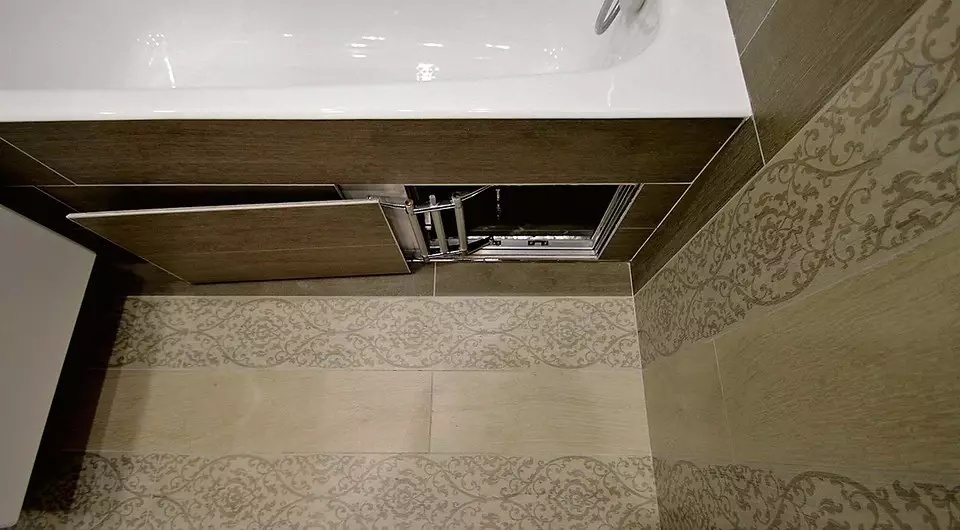
Parallel-sliding hatch requires very little space for opening, convenient, reliable and almost impaired
Frame screen
Most designers prefer a design lined with the same tile or mosaic as the walls. Most often it is built from moisture-resistant sheet materials, and the base is performed from steel galvanized profiles, which before assembly does not prevent anti-corrosion enamel.
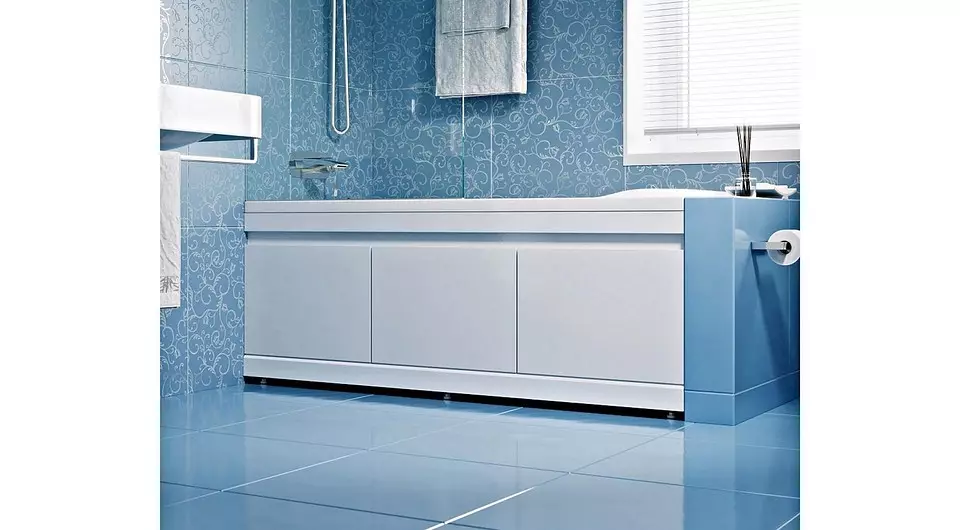
Screens from laminated MDF are beautiful, but unable to withstand moisture exposure, their weaknesses - ribs and edges
Usually, they first collect a frame of four guide profiles (pn 27 × 28 mm), which is fixed to the floor and walls; The guide under the border of the bath is fixed only at extreme points, so it should be strengthened. Then there are three or four racks (PP 27 × 60 mm), choosing their step taking into account the size of the audit hatch.
For the skin, a moisture-resistant drywall or a gypsum fiber leaf (G CLEBER or GVLV) with a thickness of 12.5 mm, but the screen will last longer, if using cement "Knauf-aquapnel" of the same thickness.
Masonry screen.
It can be constructed, for example, from partitioning gas-silicate blocks with a thickness of 50 mm. The height of the screen rarely exceeds 60 cm, so it is enough to lay out one row of blocks onto bed seam from cement glue. The extreme blocks need to be attached to the walls of pins or plates, it also does not hurt to connect to the plates each pair of adjacent blocks. Where the laying is adjacent to the border of the bathroom, it is required to leave the gap of 1-3 cm and fill it with its mounting foam.
The material is easy to drink, and arrange the opening for the hatch will not be difficult. If necessary, it is easy and push the top of the blocks to burst the screen under the side of the bath. Before facing tiles, the surface follows 2 times to handle the primer for porous bases (Ceresit CT17, Sikagard 907 W and others).
A stronger and reliable design can be elevated from plaster moisture-resistant puzzle plates (PGP). For masonry PGP, glue-based adhesive is used, in general, the process is almost no different from the above.
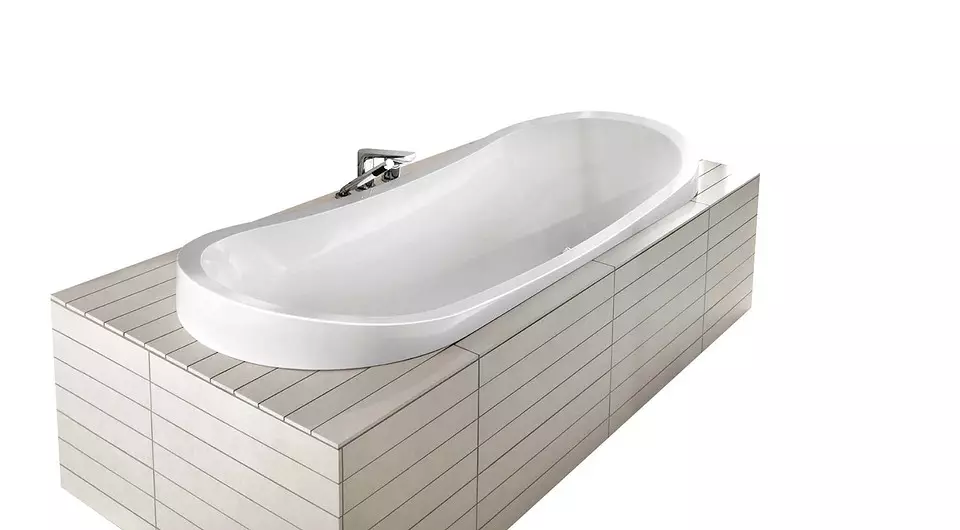
The box of three-layer blocks (foam + glass turbines) can be bled by any waterproof material.
Dog Podium
In spacious bathrooms for the bath, a massive framing in the form of a box-podium is often erected. These works are performed before finishing and installing plumbing. The box differs from the screen in that it has horizontal surfaces that not only perform a decorative function, but also used as shelves or seats.
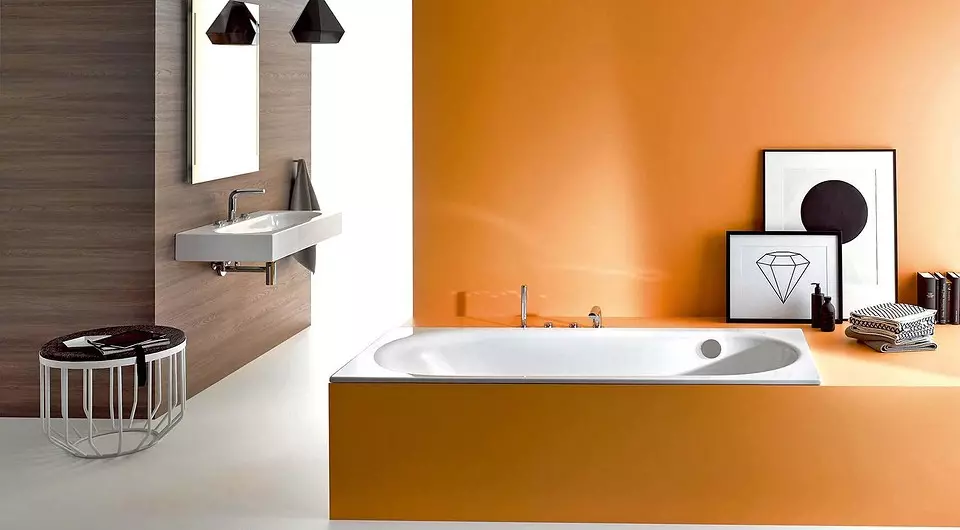
Horizontal surfaces of the podium must withstand the locally applied load of at least 150 kgf
The box is built according to the same technologies as the screen, but when assembling the frame, the larger sections profiles are used, and the masonry leads from thicker blocks. The most modern method is based on the use of three-layer blocks. This is an analogue of the polystyrene sandwich panel, but the plaster layer is replaced with the glued durable glass adhesive sheets. On the edges, the blocks are equipped with grooves and are connected by mortgage planets on glue. Such a box is going to quickly and it turns out very light, but it costs it more than masonry and inferior to him.
Installation of screens
Installation of the screen from moisture-resistant GVL on the frame of steel galvanized profiles
First of all, it was prepared for the segments of the profiles of the required length (a). Then, on the side walls, two guides were recorded by exposing them vertically using a bubble level (b). After that, the remaining framework details (B, D) fastened (guide, located under the border of the bath, for greater strength collected from two profiles). Cut from GWL parts of the desired size (D) and screwed them to the frame of self-drilling screws (e) acrylic screens on the bars easily removed, easy to maintain and racks for loads. Many bath models are equipped with such panels.
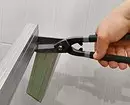
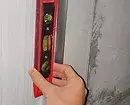
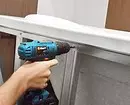
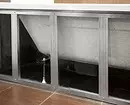
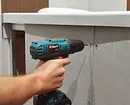
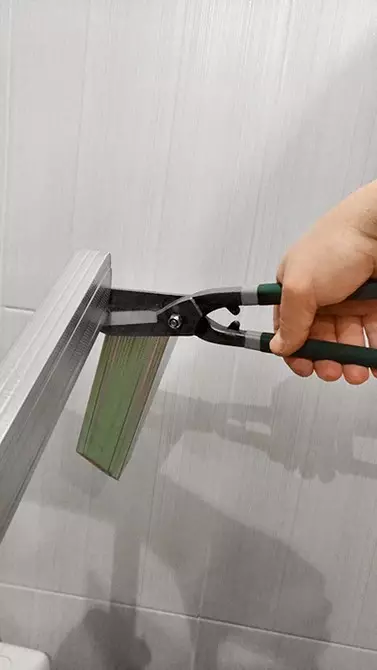
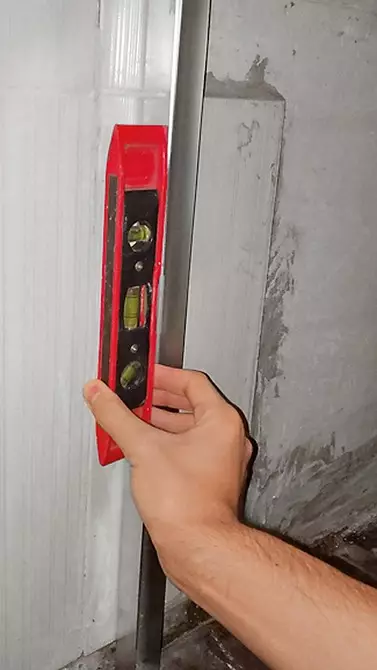
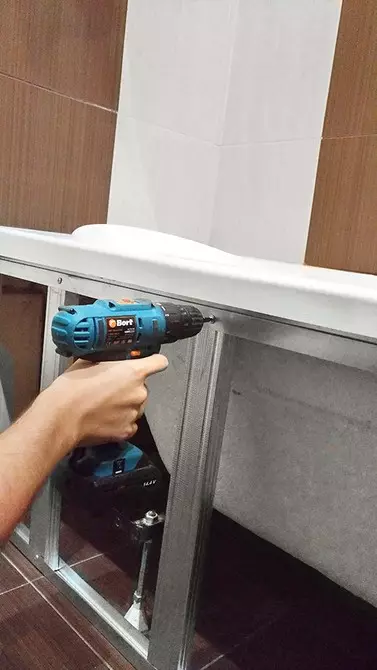
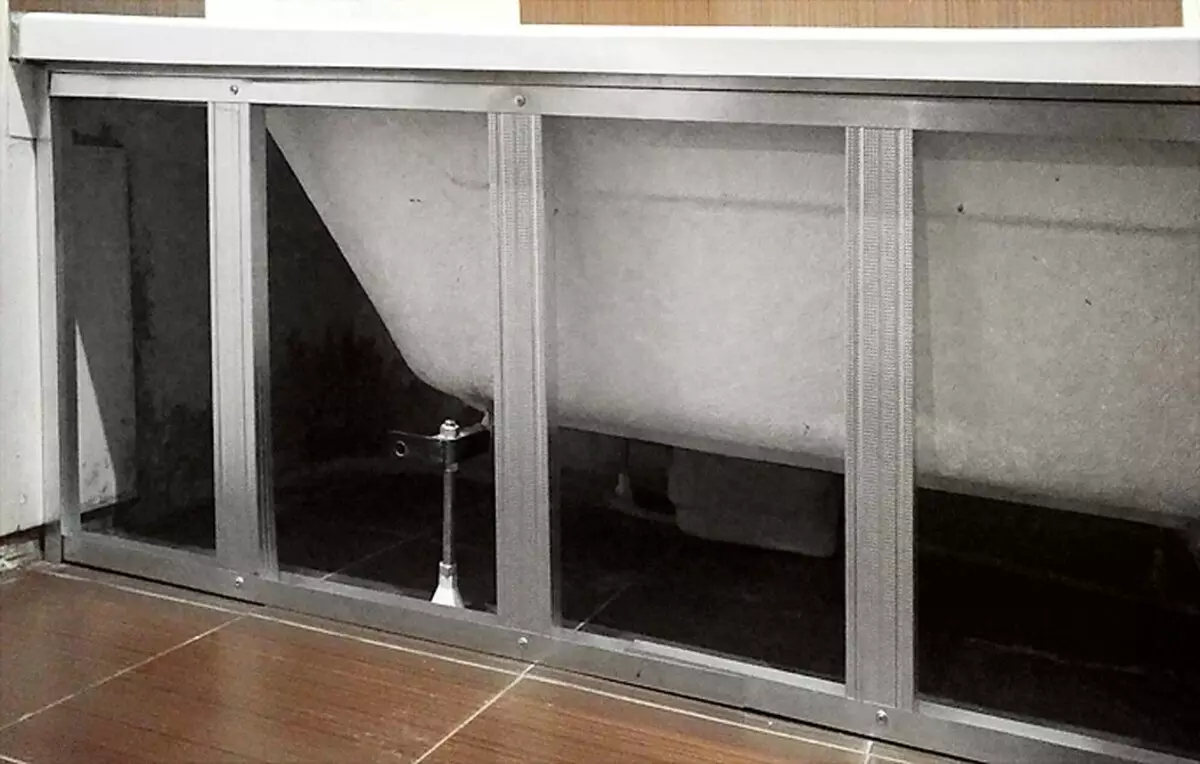
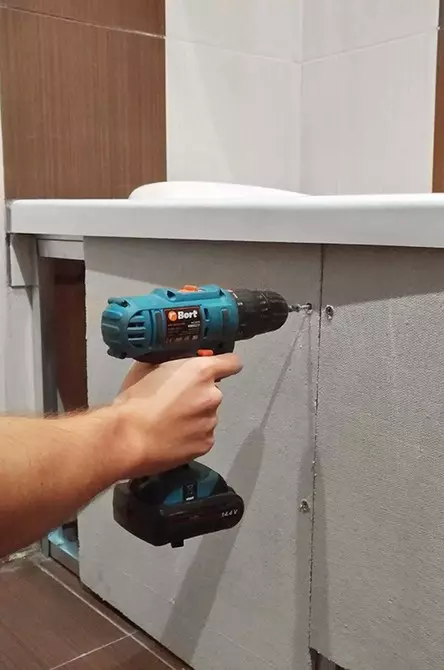
An excellent water resistance has light sandwich panels based on extruded polystyrene foam (RUSPANEL RPG, A-Panel, etc.), as well as glass adhesive sheets, which are also very durable. However, the thickness of the first is 20 mm, and the second - 10 mm, which must be taken into account when installing the revision hatch, the door of which in the standard configuration is covered with GVLV 12.5 mm.
The plane of the screen without finishing should be shifted inside with respect to the border of the bath for 10-30 mm (depending on the configuration of the side and the thickness of the tile). Before the facing, do not forget to treat sheet material (especially sharp covered joints, if available) primer for absorbing bases.
Installation of a box from sandwich panels
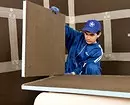
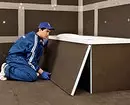
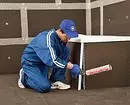
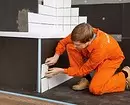
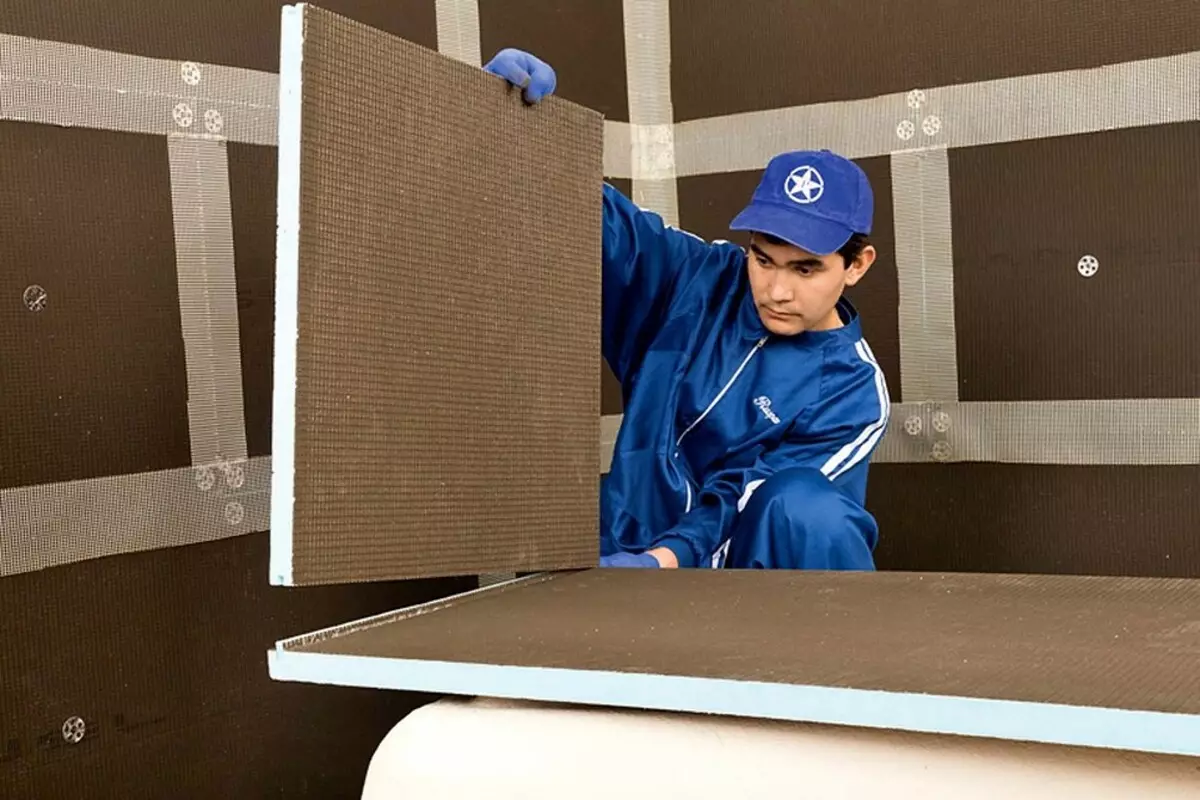
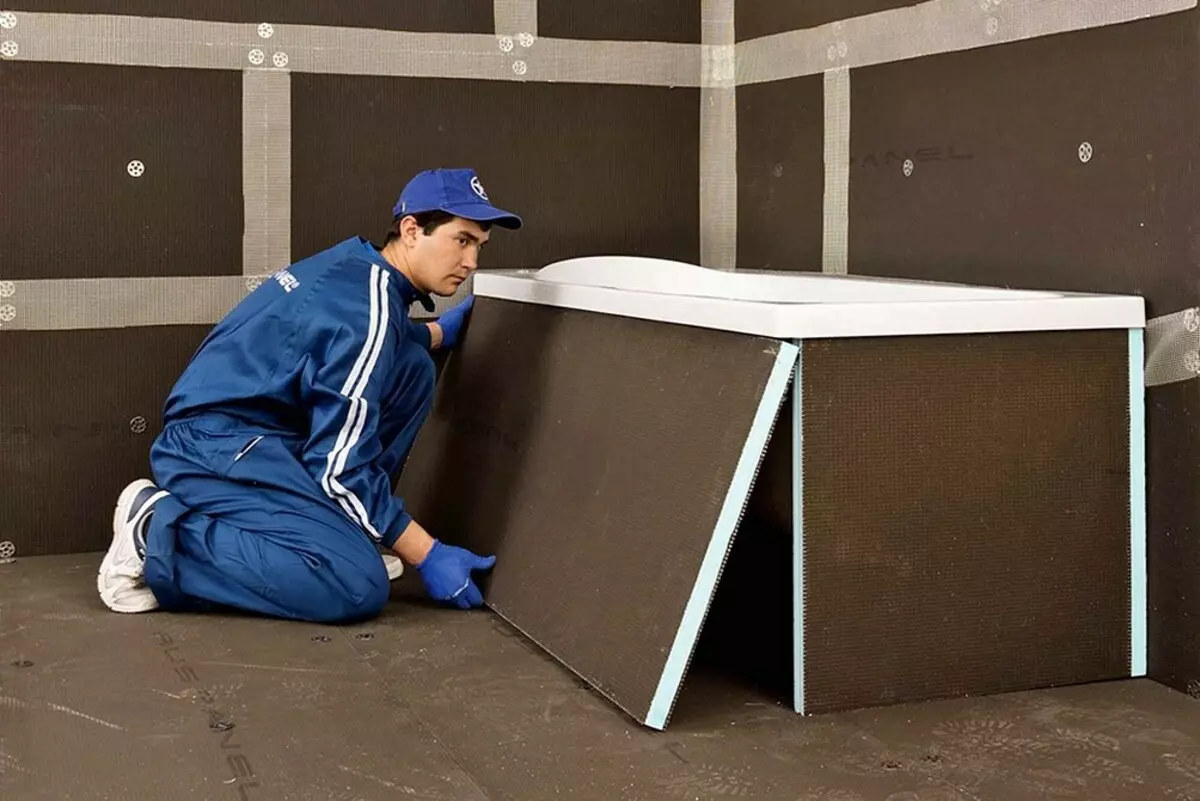
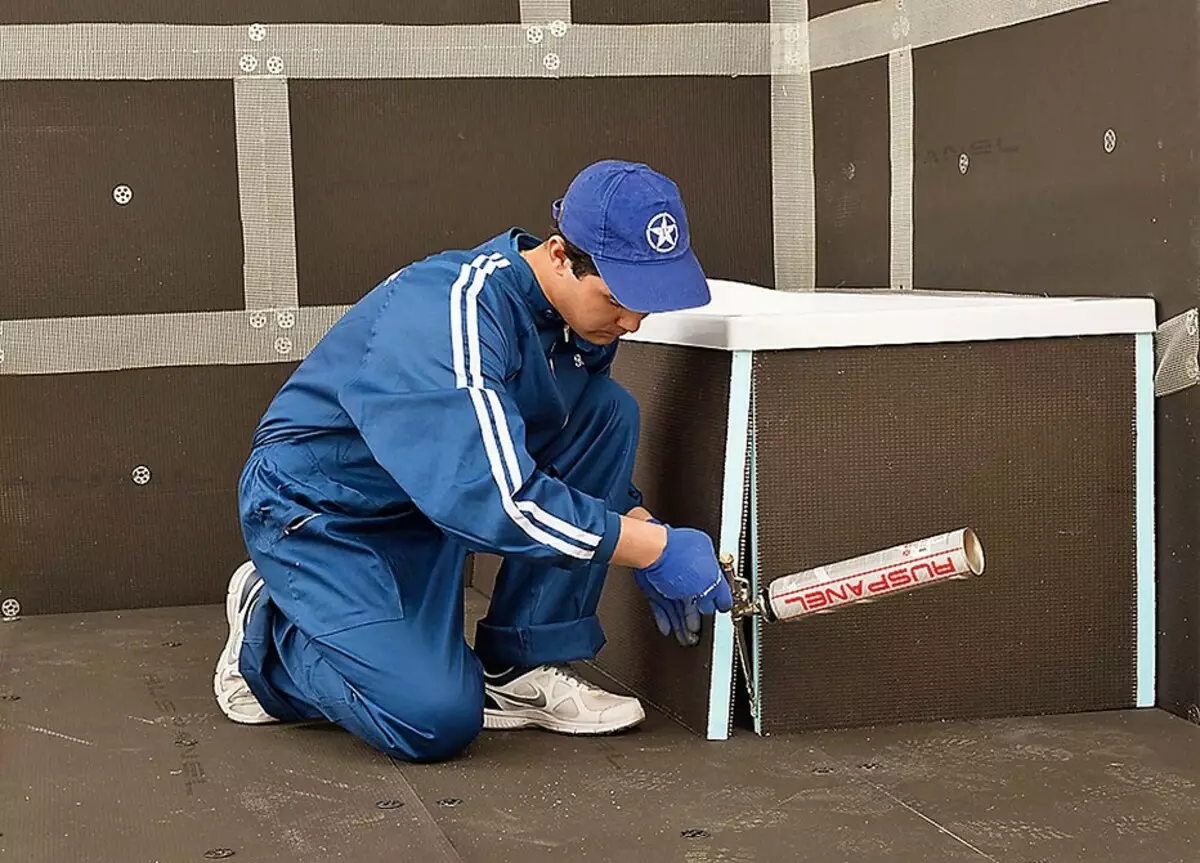
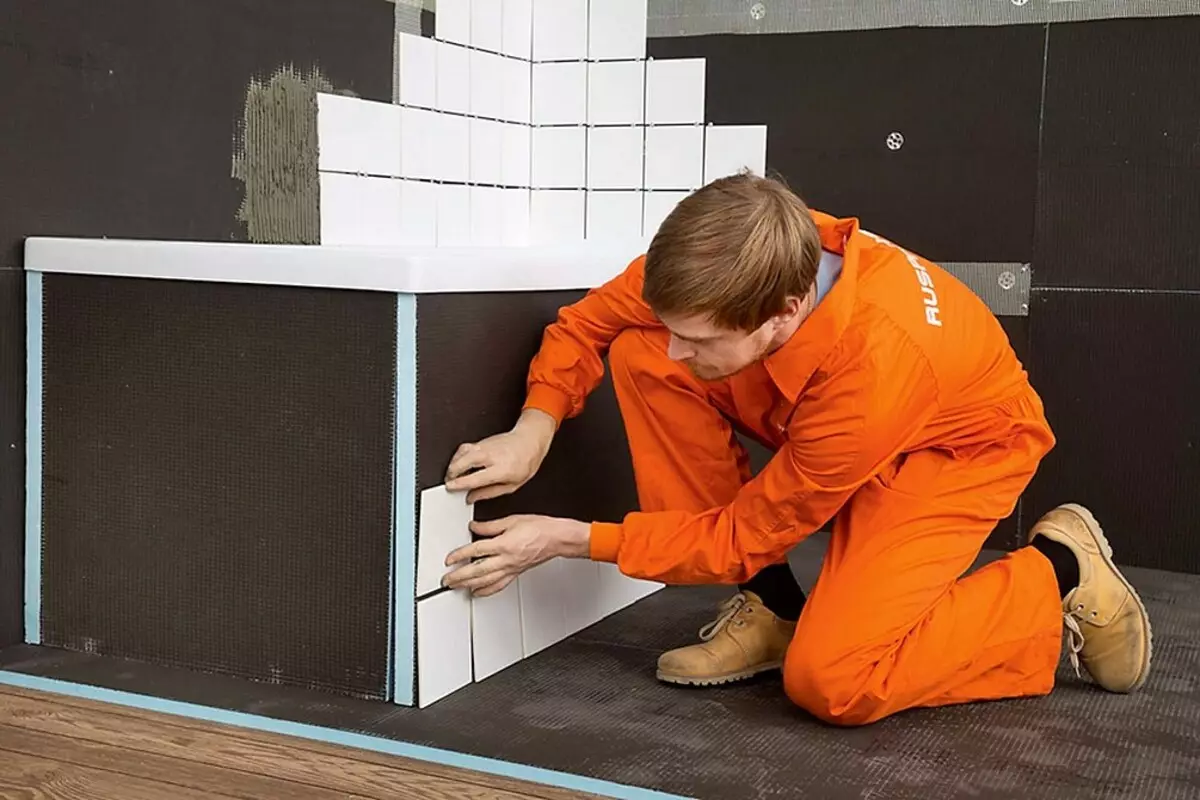
Choose Luc
In the bath screen, you must embed a hatch of at least 400 × 300 mm in size to provide access to the siphon and pipe connections. Often install the second hatch to store household supplies under the bathroom.When choosing the dimensions and the location of the door, you need to consider the size and drawing of the tile (the tile can be beyond the limits of the hatch by 3-5 cm). The most convenient models on the hinge loop, the door of which is put forward from the goat, and then swinging or shifted a lift (they are produced by the company "Practice", "Sun-Group", "Delight", "Hummer", etc.). If there is no place for their opening (for example, there is a sink snack near the bathroom), it is worth choosing a removable hatch, fixed by pressure hits. It is better to purchase a product with corrosion-resistant aluminum frame and an adjustable opening mechanism, which will help achieve a smooth clearance around the perimeter of the door. The hatch frame is mounted in the screen before its cladding. If the hatch is located close to the floor, it is important to thoroughly align it and leave between the door and the blaze of at least 3 mm. After cladding tile, the clearance around the perimeter of the door is filled with silicone sealant, selected under the color of the grout. The hardened sealant cut the wallpaper knife.
Bath curtains
Film curtains are practical and inexpensive, but they look more than modest. For a stylish interior, hard curtains of polymer or tempered silicate glass usually acquire.
The most accessible option (from 2 thousand rubles per curtain-screen size of 80 × 140 mm) - shockproof polystyrene glass, but it is easily scratched and only happens, that is, the screen will not work to make visually light. Acrylic glass to ensure the required impact resistance should have a thickness of at least 8 mm, to the same, it is necessary to wash it carefully, because the material is not very racks to local damage. The products from the monolithic polycarbonate and the tempered glass is almost twice as expensive, but it looks more graceful and they will serve much longer.
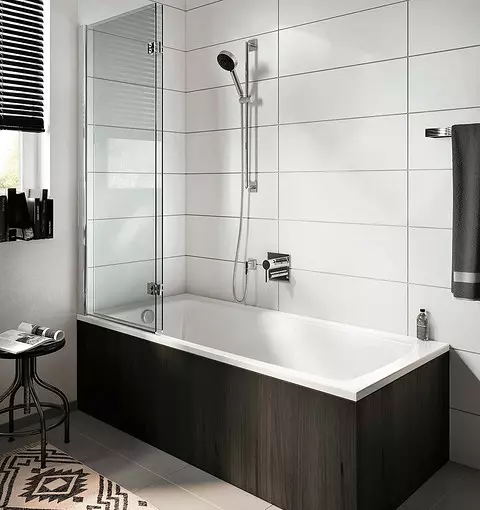
Elements of accessories must be made of stainless or chrome steel. This will increase product life.
Hard curtains are fixed, swivel, folding and sliding. What prefer?
Still models are a rectangular glass sheet of 70-90 cm wide and a height of 130-150 cm, toughly attached to the walls using profiles and / or aluminum brackets or stainless steel. Such a curtain indicates a shower zone and is usually located on the side of the mixer (by the way, to install the overwhelming majority of the curtains, it is necessary that the bath and sink are equipped with separate mixers). Fixed fences are 20-40% cheaper than rotary and folding counterparts, but worsen bathroom ergonomics.
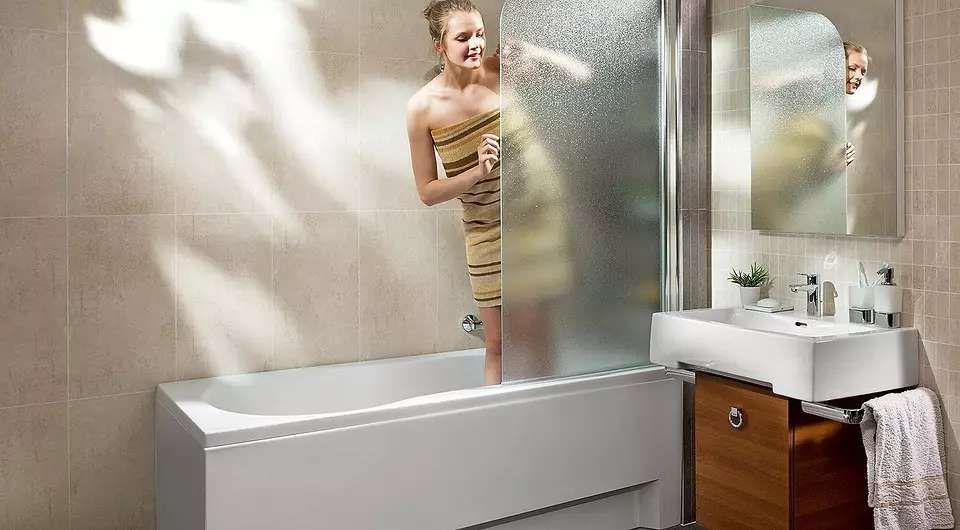
The best material for fixed curtains - the tempered triplex, however, more often applies cheaper single-layer tempered glass
Swivel models in dimensions and shape resemble fixed, but are hung on pendulum loops attached to the side wall above the side of the bath. The glass canvas can break out and rotate in the opposite direction so as not to be a hindrance, for example, during the morning wash or loading the washing machine.
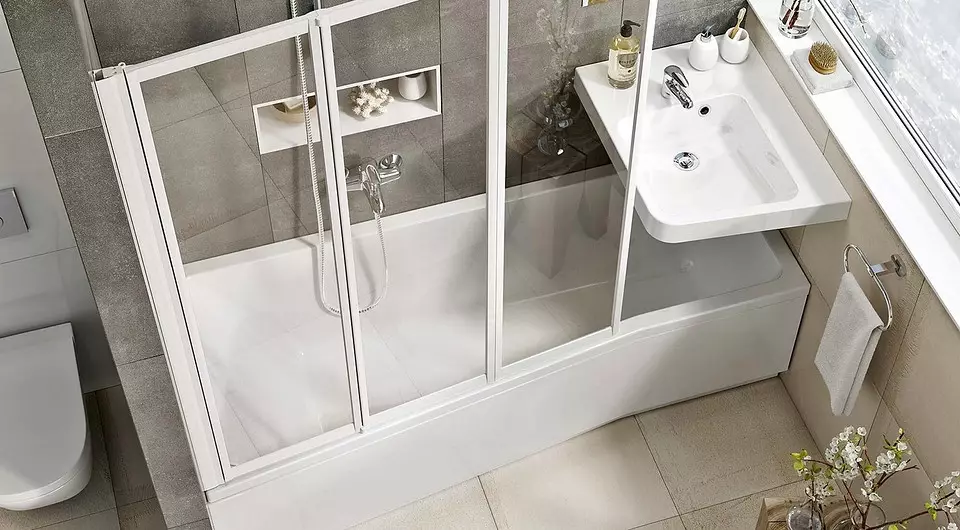
An example of non-standard layout of the bathroom, which provides a bath with a shower area, and the sink is located above the font
The overall lack of stationary and swivel curtains with one canvas is that they block the path of only the main mass of splashes, but some water still hits the floor, walls and furniture.
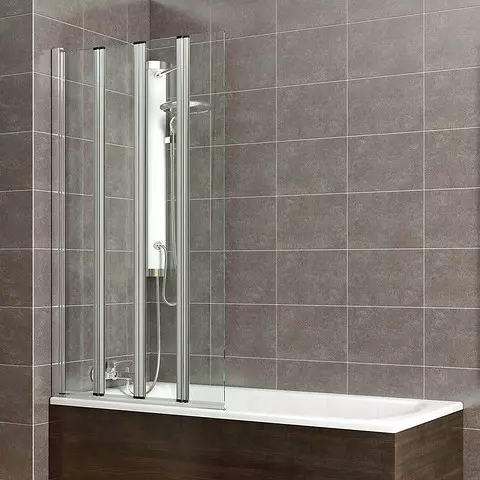
Most blinds are universal, but products made of praying (curved) glass, as a rule, are intended for a particular bath model
Folding models consist of two or more (up to five) hingedly connected toes, extreme of which is attached to the side wall. The harmonic curtains can close the entire "facade" of the fastener, creating a reliable barrier for water droplets. At the same time, in the folded position, the design is a stack at the side wall (we note that the opening elements of the bath can prevent the discovery of such a curtain, such a headrest or handle). As for the shortcomings, it is not always easy to manipulate the harmonic curtain (especially if it does not have a lower guide) is not always simple, and if the walls of the bathroom are made of GCL or cellular blocks, problems may occur during installation: the load on the wall mountings is quite high.
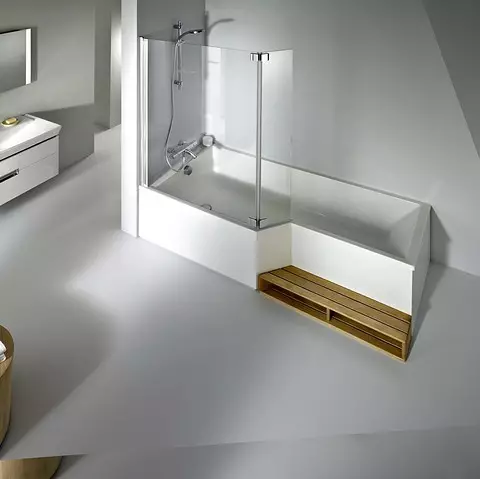
Specialized firms can make a curtain on request for 2-3 weeks
Sliding models are reliable and easy to operate. At the same time, the easiest move in systems with upper or lower rollers, and it is better to refuse from sliding flaps. Until recently, the sliding designs mostly looked pretty heavy, but today the leading companies offer almost invisible models with craftless canvases made of tempered glass and lower or overhead guides, such as Xtensa (HUPPE) or Screens SC-44 (RGW). Installation of the curtains of this type will not cause difficulties - it is important only to trace so that the masters correctly set the bath (its side must be strictly horizontal).
